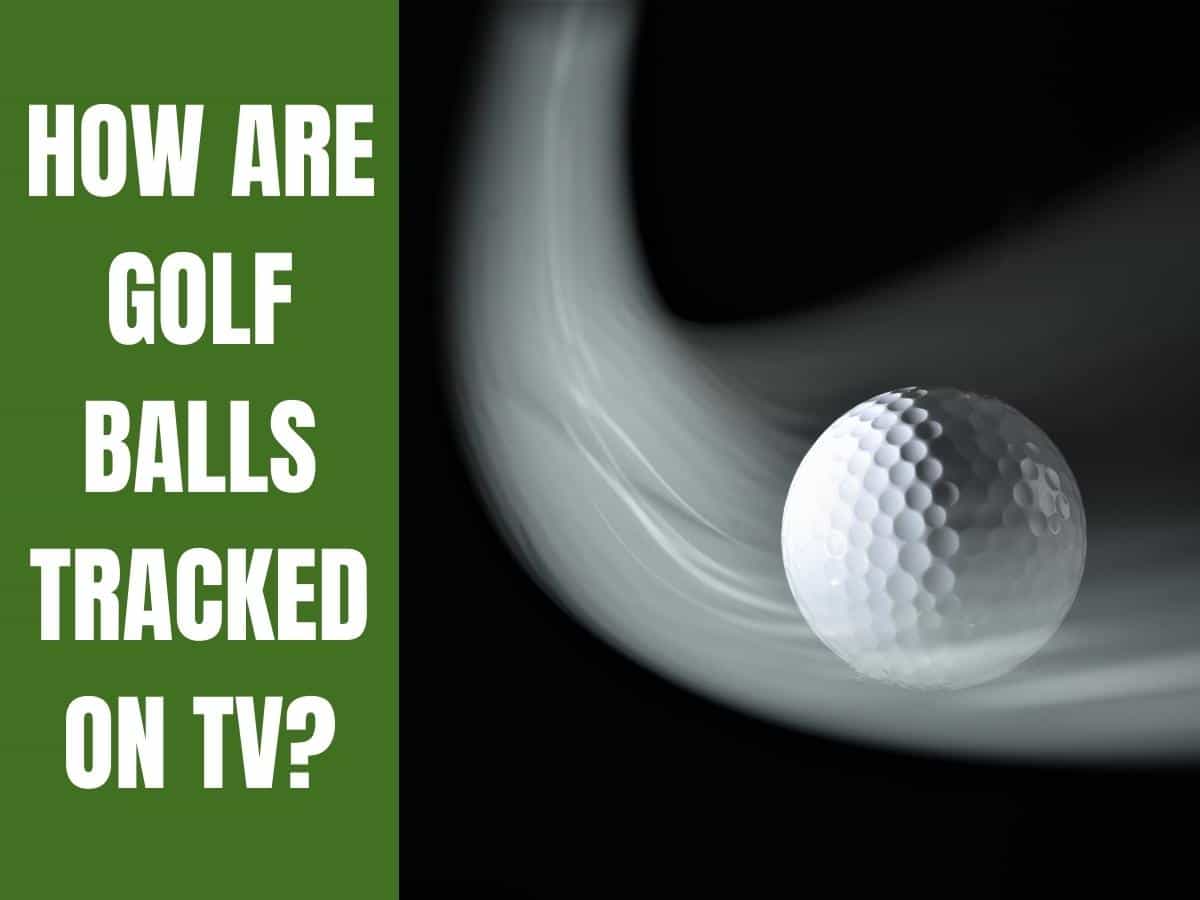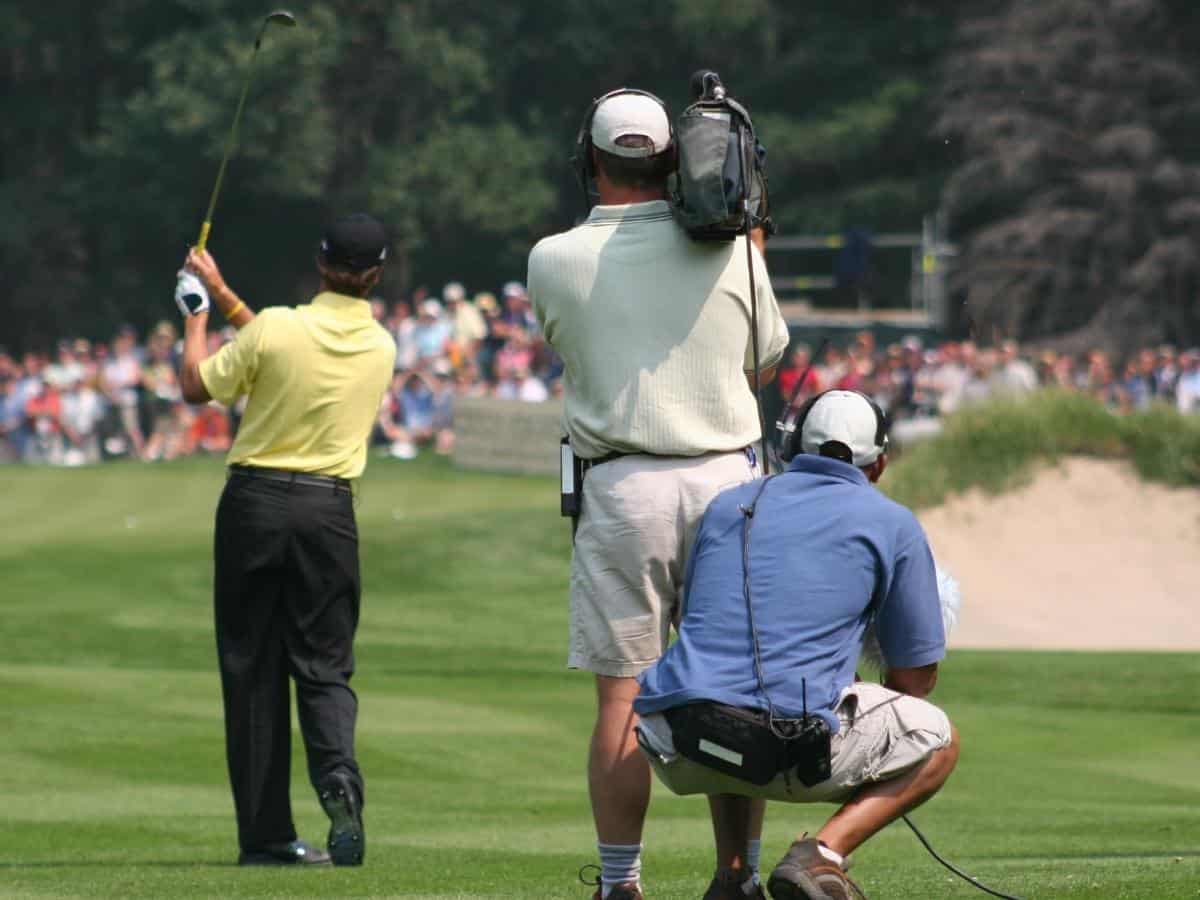How Are Golf Balls Tracked On Television?
If you watch golf on TV and see those real-time ball-tracking graphics displayed for drives and approach shots, did you ever wonder how they do that? I mean, it’s pretty amazing stuff!
Golf balls are tracked on TV using a technology called Toptracer, which was originally Protracer until Topgolf was acquired in 2016. Toptracer users CMOS sensors in special cameras that follow and track the ball in flight and convert that data into the flight graphics that you see on your TV.
This article will cover:
- The history of golf ball tracking.
- How Toptracer tracks golf balls for TV.
- Other golf ball tracking methods.
So, if you want to know more about how golf balls are tracked on TV, you’ve come to the right place. Let’s tee off!

The History Of Golf Ball Tracking
The story of Toptracer goes back to 1998 when Swedish entrepreneur and golf enthusiast Daniel Forsgren looked for a way to track golf balls in flight and plot their trajectory.
The result was Protracer, and it revolutionized the world of golf not only for TV viewers but for millions of golfers and coaches around the world. Aside from the TV aspect, it has become one of the most widely used technologies for coaching and assessing swing and ball stats for golfers at any skill level.
In 2006, the same year that Hawkeye made its debut at the US Open Tennis Tournament, Protracer was born, and it had such an impact over the next ten years that Topgolf bought it in 2016 and rebranded it Toptracer.
How Does Toptracer Track Golf Balls For TV?
Toptracer uses CMOS sensors (CMOS stands for Complementary Metal-Oxide Semiconductor), the same found in modern DSLR cameras, to create 3D space. When the golf ball travels through that space, the sensors track it in real time.
The CMOS sensors are linked to a computer, and it is here that the magic happens. As the golf ball moves through the 3D space, the computer can identify the ball in each image and then create a real-time tracking image of the flight path and deliver that to the TV screens.
The camera is stationary and usually positioned behind the golfer for optimum data capture. The technology in Toptracer can be moved all over the course to provide additional graphics and data for players, commentators, and viewers alike.

New Toptracer Features Provide More Data
Over time, the technology evolved and developed more features, and many of those are now seen on TV when you watch major golf tournaments. Elements like clubhead speed, launch angle, and ball spin are just a few of the additional features that Toptracer has brought us.
The spin-off from this has been products like TrackMan that read the reflections of microwave frequencies emitted from the golf ball. These create additional parameters such as attack angles, clubface path, speed, clubface angles at impact, and more that are used for coaching and club fitting purposes.
The same technology that shows those amazing ball flight graphics and club information on TV is the same as the tech used when testing new clubs or coaching using ball tracking radar.
Related: What Is Smash Factor In Golf?
What Other Golf Ball Tracking Methods Are Used?
While Toptracer is the system that provides the ball-tracking graphics, there are other systems in place that also track the golf ball for TV, and those require the skills of camera operators positioned on the course.
This concept goes back to the late 1950s when Frank Chirkinian, the man known as ‘The Father Of Televised Golf,’ directed the shooting of the 1958 US Open.
He changed how live golf was filmed for TV by showing as many shots as possible and cutting from player to player as they played. He also placed microphones around the course to capture comments and conversations from the players.
Cameras were also put in tall trees, towers, and even on blimps to get shots of the ball in flight and the course that had not been seen on TV before.
Chirkinian’s innovative approach interested CBS, and he spent the next 37 years with them and made golf far more enjoyable to watch for TV viewers.
Related: Do you want to know how often the pros change golf balls? Check out this article, How Often Do PGA Tour Players Change Balls?
How Do Cameramen Shoot Golf For TV?
Anyone who has ever stood on a tee or a fairway and watched the ball fly, you’ll know that it takes some knowledge of the game to get a good idea of where the golf ball is going, and the same is true for the camera operators placed on the golf course to shoot the events.
Camera operators need a good knowledge of the game to accurately estimate where the ball will be going to direct the camera and catch it – but golf being the game it is, even they sometimes lose the ball on bad shots!
As TV cameras evolved to lighter and more maneuverable systems, gyros made them easier to move around quickly and track golf balls in flight.
It also made it easier for camera crews to follow groups of golfers through their round, so when you see the ’lead groups’ being televised, it’s thanks to the skills of the camera operators walking with them.

Golf Balls Can Be Difficult To Track
When you watch golf, you may think that these guys have some special tech that makes it easy for them to follow the ball, but as you know, tracking a white golf ball against bright, clear, or overcast skies is often challenging.
Related: Why Are Golf Balls White?
Here, the techniques Frank Chirkinian created and the camera operators knowing the game have come into play to bring you those amazing shots and tension you see during the broadcast.
The intuitive experience of camera operators often creates the tense shots and scenarios that you see and witness on TV, making a massive difference to the viewing experience.
Combined with the tracking technology and the on-course cameras, it’s now possible to get as close to the action on the course without actually being there.
Final Thoughts
One day, you may find that you can sit completely immersed in a virtual 3D environment in your lounge, experience the game, and see shots and stats from every angle imaginable. The days when you could only see the shot tracking and camera angles may become a distant memory.
The advances in radar technology will continue to create new sets of data that will provide further insight into the science of tracking the golf ball in flight and the mechanics behind it.
Related Posts You May Like:






